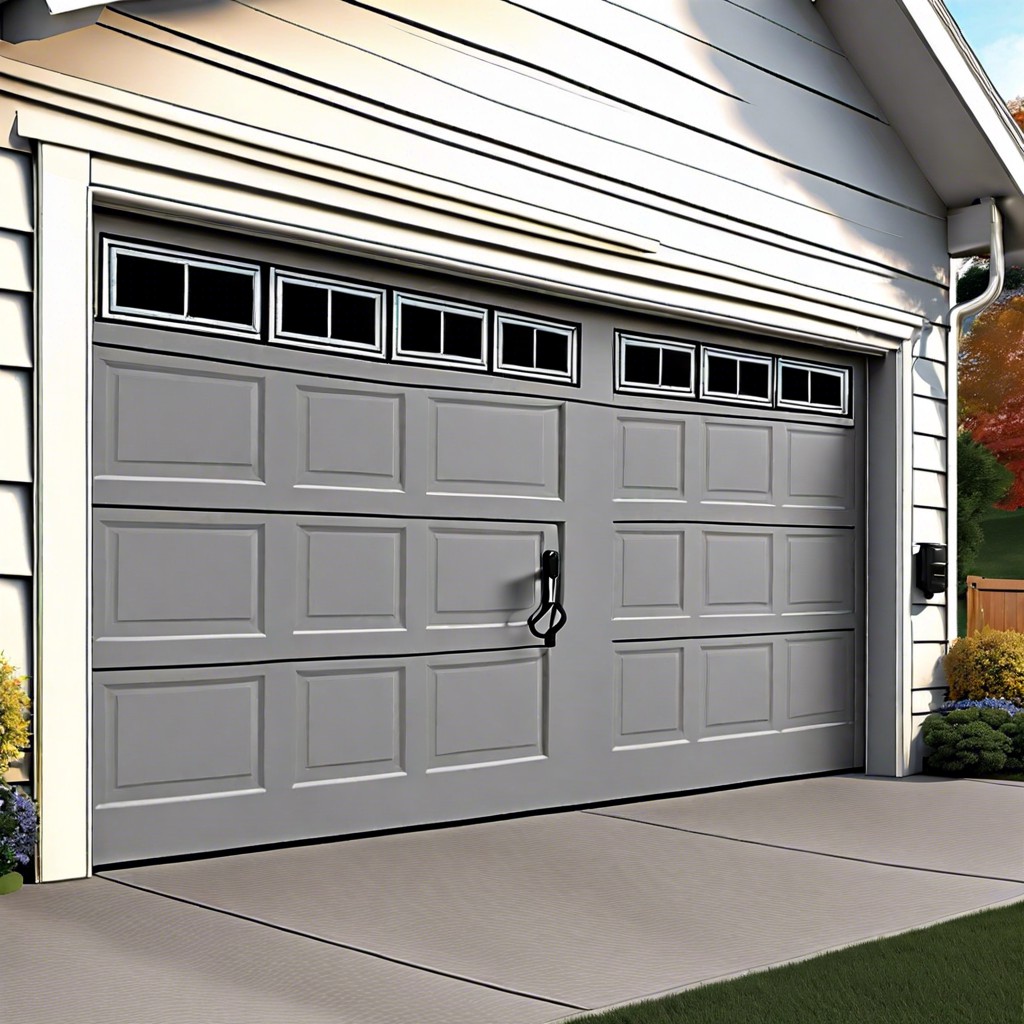Learn how to safely and effectively use your garage door emergency release during power outages or mechanical failures.
Key takeaways:
- Find emergency release cord easily (red, handle, trolley).
- Ensure garage door is closed before emergency release.
- Pull emergency cord gently to disengage trolley.
- Lift door steadily, avoid forcing or sudden movements.
- Re-engage opener by pulling cord and testing door.
Identifying the Emergency Release Cord

The emergency release cord is the superhero cape of your garage door. Typically, it’s a red cord dangling from a lever on the garage door opener rail, begging to be noticed. Here’s how to spot it:
Look up: It’s usually attached to the trolley, which moves along the rail of the door opener.
Color check: The cord is often red (because who doesn’t like a dash of color in their garage).
Handle it: It has a handle or knob for easy gripping, no need to worry about getting fancy gloves or breaking a nail.
That’s it! You’ve identified your emergency release cord, the tiny hero in the big world of garage mechanics.
Setting the Garage Door to the Closed Position
Before you do anything, make sure the garage door is in the closed position. This is crucial for safety and practicality. Allowing the garage door to be fully shut:
- Ensures it won’t come crashing down unexpectedly when disengaged. No one wants a guillotine where their car should be, right?
- Keeps the entire process controlled and safe for you. Safety first; broken toes or worse are hardly a good look.
- Makes it easier to manually lift the door later.
By starting with the door down, you’re setting yourself up for a smooth, efficient emergency release operation. It’s like taking the training wheels off—only smarter.
Operating the Emergency Release Cord
Gently pull on the cord. Look for the red handle dangling from the garage door mechanism. It’s like a big, friendly stop sign saying, “Hey, pull me!”
Once you’ve located it, give it a steady tug. Imagine you’re starting a lawnmower, but with less effort. No need to unleash your inner Hulk.
This action will disengage the trolley from the carriage. In plain English? You’ve just unhitched the door from the automatic opener.
Listen for a click or clunk. That’s your signal that the release action is successful.
Congrats, you’ve just taken the first step towards manual garage door mastery.
Manually Opening the Garage Door
First, grip the bottom edge of your garage door firmly. Take a deep breath and channel your inner strongman. Ready?
Lift steadily. You don’t want to end up wrestling with it like it’s the heavyweight champion.
As you lift, remember you’re not auditioning for a superhero movie. Slow and steady wins this race. Applying a consistent, even pressure is key.
Be prepared for sudden light—most garages have been accused of harboring lurking shadows. Once fully raised, the door should stay in place. No sneaky drop-backs allowed!
If you encounter resistance, don’t force it. A gentle reminder that brute force belongs in the gym, not the garage. You might need to check for obstructions or uneven tracks.
Voilà! You’re in. Or out. Depending on your perspective.
Re-engaging the Garage Door Opener
Once you’re ready to re-engage the garage door opener, the process is practically child’s play. First, ensure the door is in the fully closed position. If it’s partially open, the opener might not sync correctly—talk about a frustrating mix-up.
Next, simply pull the emergency release cord towards the garage door. This action resets the mechanism, allowing it to reconnect with the opener. Just like reattaching a Velcro strap!
Now comes the fun part: press the button on your garage door opener remote or wall control. Voilà! The opener trolley will move until it connects with the door arm, making everything work together like a well-rehearsed dance routine.
Last but not least, test the door a couple of times to make sure everything is in perfect harmony. If it runs smoothly, you’re golden. If not, maybe it’s time to double-check that everything is properly aligned. Special effects are better left to movies, not your garage door.